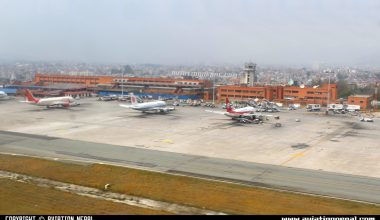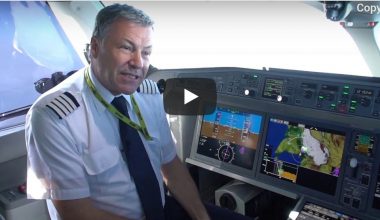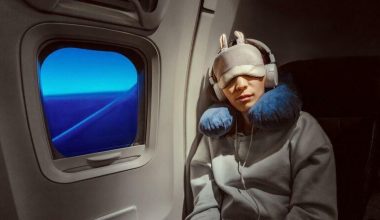Often considered one of the most beautiful prop airliners ever to grace the skies, Lockheed L-1649 Starliner was developed from L-1049 Super Constellation, with a completely redesigned wing and a more powerful version R350 engine.

It is the ultimate design of a popular ‘constellation’ produced by Lockheed Corporation and one of the greatest and last piston-powered airliners (along with Douglas DC-7). Among the Lockheed series of L-049, L-0649, L-1049, Starliner is graceful. The imminent introduction of the jet era in the late 1950s overcame the Starliners; hence only 44 such aircraft were built.
Consisting of 4 Wright R-3350 Turbocompound engines to power the plane, the plane debuted its first flight in October 1956. It was made at Lockheed’s Burbank, California. They were produced from 1956 to 19958; however, it was introduced to the world on June 1, 1957. Though it has retired since the 1980s, it was used mainly by Lufthansa, Air France, and Trans World Airlines.
Read more: Some of the world’s biggest aviation mysteries
The Lockheed Corporation, the major American aerospace manufacturer, established in 1926, manufactured this magnificent aircraft. L-1649 has a different flap handle and flap position indicator. It was the queen of North Atlantic, star of skies, and ushered in a new aviation era.
4 Existing Starliner aircraft
The early 1980s ceased all commercial operations of Starliner. Most of the Starliners ended up rusting on the tarmac in airplane graveyards over the next 30 years. Few Starliners survived by freight services.
Though the Starliners don’t fly in all their glory anymore, 4 Starliners recreate the glamour days of 1950s period air travel.
In February 2004, one of the L-1649 Starliner, the dilapidated old aircraft, was restored into a beautifully elegant appearance. ZS-DVJ (registered by Trek Airways) was painted in Trek Airway livery. It is one of the four Starliners which still exists and is considered the World’s Finest L-1649A in passenger configuration, on a static display of South Africa Airway Museum Society.

The other aircraft got a new life in Trans World Airline Hotel as a cocktail lounge in 2018. It’s a part of a huge 512-room hotel at previously TWA terminal. It was once a property of Maurice Roundy and has been grounded since the 1980s at A.L. airport. It will be the indicator as it is the merger of contemporary and vintage time, where one can experience the flying time of 1962.
The other L-1649, which is N974R, is displayed outside the Fantasy of Flight Museum in Florida.
Lufthansa Technik North America was restoring the remaining aircraft in Auburn, Maine. But the project was canceled in 2018. The airframe was shipped to Germany. After ten years of hard work of relocating the aircraft, Lufthansa abandoned restoring the Starliner to flying shape. Though 95% of the restoration campaign had been completed and was so close to flight, the eventual fate of the Star of Tigris was the aviation museum. The plans were being made to assemble the aircraft and make it part of the Lufthansa Static display accessible to the public.
In February 2021, the plane was reported to be accommodated in an aircraft hangar by Deutsche Lufthansa Berlin Foundation to keep up its value. The plane won’t be sold but will be disassembled. Although the COVID crisis has delayed the exhibition of aircraft, at least it is being protected.
Specialties of Starliner
It was regarded as the ‘state of the art’ in technology and amenities in the aviation sector. It had a first-class cabin in the front and rear section; the onboard lounges were extravagant and had original artwork. It is the unique presentation of how airline luxury and performance looked like during the 1950s. The Lufthansa ‘Superstars’ had the ultimate luxury, accommodating 40 passengers, offering senatorial services, used in transatlantic flights. Starliner reigned the sky shortly before Jets displaced these prop-driven aircraft.
How was Lockheed L-1649 Starliner developed?
The development of the L-1649 Starliner can be dated back to the manufacture of Douglas DC-7, major piston-engine powered transport, which revoked Lockheed to design L-1449 in response to it. L-1449 could cruise faster than DC-7C, powered by a P.T. 2G-3turboprop engine. It had 150 feet wing. Because of high operational cost, high fuel consumption, and unpredictability, the PT2 project failed in March 1955. L-1549 replaced the L-1449 in early 1955. The new L-1549 was about 100 cm longer than L-1449, had a maximum gross take-off weight of 85000 kgs.
L-1549s were never completed. It was abandoned. After P&W dropped the engine project, Lockheed proposed to proceed with L-1549 with Allison turboprops but was rejected by Trans World Airlines. They agreed to install piston engine L-1449, which Lockheed soon dropped in April 1955.
Read more: Antonov 225 Mriya, the successful Soviet Cargo Plane with five facts
Following the failure to build L-1449, and L-1549, Lockheed upgraded the model of Constellation variant, which was designed as L-1649A Starliner. It was the last development of Constellation design. With a wing stretched to 150 feet, powered by 4 Wright R-3350 TC18-EA-2 Turbocompound radial engines, it could provide nonstop service on U.S. west coast (California)-Europe routes. With a total passenger capacity of 58, the new L-1649A could fly over a range of 6500 miles at 350 miles per hour. The range and speed of L-1649 could compete with Douglas DC-7C. The new aircraft were manufactured with a motive to gain profit in the transcontinental air routes. Starliner enabled the airliners to transport the passengers with unprecedented comfort and greater speed.
Two variants of the Lockheed L-1649 Starliner were proposed. They were L-1649A and L-1649B. Although forty-four L-1649A were built, the L-1649B couldn’t succeed. It was proposed to use the turboprop version of engines in L-1649B. L-1649A became the last of Lockheed airliners using a piston engine.
Operational Service of Lockheed L-1649 Starliner
The Beloved Constellation’s final version Lockheed L-1649 Starliner commenced its air service on June 1, 1957, from New York Idlewild to London and Frankfurt with Trans World Airlines. The Starliner took its first nonstop flight from Los Angeles to London in September 1957. They were mostly used on longer domestic flights and New York-Europe routes.

The jet aircraft came in in early 1958, which made Starliners obsolete fairly quickly. Trans World Airlines replaced their ‘Jetstream’ Starliners on transatlantic flights from 1961, although they had been in service for only four years. They were replaced by Boeing 707 from domestic scheduled flights. Trans World Airlines operated 30 weekly flights with Starliner, out of which Paris had one flight per day, London had five weekly flights, four for Frankfurt, and two weekly flights from Madrid, Geneva, and Lisbon. Similarly, there was one flight from Zurich and Rome on a week by L-1649s.
Another primary user of Starliner, Air France, bought ten such aircraft, marketed as ‘Super Starliner.’ It entered into flight service with Air France in April 1958, from Paris to Anchorage to Tokyo. L-1649s operated a total of 22 nonstop weekly schedules on the Orly -Idlewild route. Among them, four flew to Mexico City; two operated from Orly to Montreal to Chicago Midway weekly.
Lufthansa, a major airline in Germany, purchases this Starliner. It was delivered to Lufthansa on January 17, 1958. The airliner was registered as D-ALOL, which was utilized for Trans-Atlantic flight services. They marketed their Starliners as ‘Super Stars.’
Lufthansa’s Starliners provided nonstop air services from Lockheed factory, Burbank, to Hamburg. In summer 959, Lufthansa commenced a nonstop scheduled flight from Frankfurt, Dusseldorf, and Orly to connect New York.
In the early 1960s, twelve L-1649s of Transatlantic airlines and 2 Lufthansa 1649s were converted into cargo planes after Boeing 707 took over.
Alaska Airlines operated two Starliners for Military Air Transport Services (MATS). Few Starliners were used for charter operations. During the 1970s, Starliner provided cargo services in Alaska. Douglas DC-7C had more commercial success than Starliner. Total 121 DC-7Cs were sold compared to 44 Starliners, yet it had entered the air service year later. Its airframe, albeit being expensive, had a greater range and made more sales than Starliner.
Tragic accidents of Lockheed L-1649 Starliner
Two of the L-1649A Starliners have tragic accidents. On June 26, 1959, Trans World Airlines, flight no TW891, on its international scheduled passenger flight, of aircraft Starliner named ‘Start of Severn’ suffered structural failure, started by separating the aircraft wing. There was a breaking up in the flight, which was caused because of the explosion of fuel vapors. The flight was to be destined at Paris-Orly airport, departed from Malpensa Airport. The accident damaged the aircraft beyond the damage, and all 59 passengers and eight crew members were killed.
Another Lockheed L-1649 A Starliner operated by Air France, flight no. AF406 was supposed to be a regularly scheduled passenger flight from Brazzaville to Paris before it broke up in flight and crashed. I.T. was in May 1961, the Starliner named ‘De Grass’ suffered an empennage break and crashed in the Sahara Desert. None of the people on the flight survived, including 69 passengers and nine crew. The probable cause of the crash was explosive device denotation which caused the empennage break.






